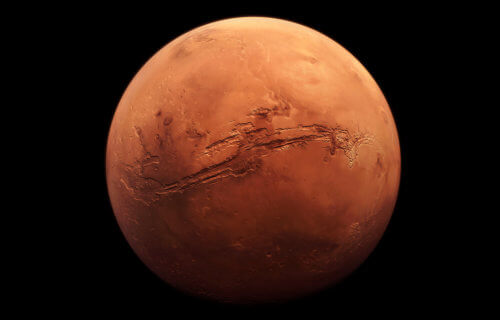ST. LOUIS, Mo. — Mars has never been home to anything that we consider life, a new study claims. About half the size of Earth, the Red Planet is the second smallest planet in the solar system. Scientists from the Washington University in St. Louis say it is so tiny, there would never have been enough water to start and sustain life.
“Mars’ fate was decided from the beginning,” says Kun Wang, assistant professor of earth and planetary sciences in Arts & Sciences in a university release. “There is likely a threshold on the size requirements of rocky planets to retain enough water to enable habitability and plate tectonics, with mass exceeding that of Mars.”
The findings are a setback for alien hunters. However, it could help identify planets outside the solar system that may actually host life. Some theories suggest Mars had more water than Earth billions of years ago, but the new study argues that this is unlikely.
Where did all the water go?
There certainly was some water at one point on Mars, with the Viking orbiter, Curiosity, and Perseverance ground probes returning dramatic images of river valleys and flood channels. Today, Mars is a barren desert, while Earth is a “blue marble.” Previous theories blame solar radiation, or Mars’ magnetic field stripping the thick atmosphere. Dr. Wang and colleagues say the explanation for its drastic inhospitality is much more simple.
The team used stable isotopes of potassium (K) as a tracer to estimate volatile elements and compounds — including water — on planets. The analysis revealed that Mars lost more volatile substances than Earth during its formation, but not as much as smaller and drier bodies like the Moon and asteroids. Study authors also discovered the size of a planet and volatile substances have a strong connection to each other.
“The reason for far lower abundances of volatile elements and their compounds in differentiated planets than in primitive undifferentiated meteorites has been a longstanding question,” explains Katharina Lodders, research professor of earth and planetary sciences. “The finding of the correlation of K isotopic compositions with planet gravity is a novel discovery with important quantitative implications for when and how the differentiated planets received and lost their volatiles.”
Rewriting the history of Mars
Dr. Wang adds that Martian meteorites shed light on the chemical make-up of Mars.
“Those Martian meteorites have ages varying from several hundred millions to 4 billion years and recorded Mars’ volatile evolution history. Through measuring the isotopes of moderately volatile elements, such as potassium, we can infer the degree of volatile depletion of bulk planets and make comparisons between different solar system bodies.”
“It’s indisputable that there used to be liquid water on the surface of Mars, but how much water in total Mars once had is hard to quantify through remote sensing and rover studies alone,” Wang continues. “There are many models out there for the bulk water content of Mars. In some of them, early Mars was even wetter than the Earth. We don’t believe that was the case.”
Refining the search for alien life
The study has implications for the search for extraterrestrial life. Being too close to stars affects the amount of volatiles a planet or moon can retain. The measurement is factored into indexes of habitable — or “Goldilocks” — zones.
“This study emphasizes that there is a very limited size range for planets to have just enough but not too much water to develop a habitable surface environment,” says study co-author Klaus Mezger of the Center for Space and Habitability at the University of Bern in Switzerland. “These results will guide astronomers in their search for habitable exoplanets in other solar systems.”
The team believes size should be a key consideration when thinking about whether an exoplanet could support life.
“The size of an exoplanet is one of the parameters that is easiest to determine,” Wang concludes. “Based on size and mass, we now know whether an exoplanet is a candidate for life, because a first-order determining factor for volatile retention is size.”
The study appears in the journal Proceedings of the National Academy of Sciences.
South West News Service writer Mark Waghorn contributed to this report.
